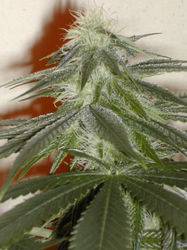G
Guest
the fact that these forums are falling apart due to a massive influx of new, and unexperienced members, has forced the administration here to consider many new forum features/topics, and since i see nothing being done here to save (what once was) our modest forums, i have decided to start this thread up accepting GROW F.A.Q. SUBMISSIONS SO THAT GYPSY AND THE STAFF CAN POSSIBLY STICK A QUICK F.A.Q. PAGE IN THE NAVIGATION BAR AT THE BOTTOM OF THE PAGE.
OVERGROWERS:
I am sure many of you have some of the overgrow FAQ stuff saved on your drives. This is an invaluable resource right now and posting it is a help to the community more than you know.
although OG likely had rights to the actual FAQ entries, the content itself is up for grabs. And you have some right to it, you guys were the ones who wrote it originally.
here's why this needs to be done,
upon signing on this afternoon, i was greeted with almost TWICE the amount of newb. threads as there were last night.
creation of a grow FAQ of sorts to be permanently or temporarily placed in the sites main menu, would HOPEFULLY stop some of the basic questions that neb growers have, and have no place to find the answer to except in the growers forums, this is NOT a good thing.
so post here, any and all TEKs, Write-ups, DIY jobs, soil mixes, a glossary of terms such as the one created by OG bub should have it's place here as well..
No matter what, make sure what you are posting is TRIED AND TRUE, widely accepted technique, proven to work beyond the shadow of a doubt.
i am sure NOT ALL SUBMISSIONS will be selected, as many will be repetitive in nature.
anyway, i hope the admin gets on the ball here and gets the site cleaned up.
mods aint on their job, or there aint enough of em, people NEED mentors right now, and there needs to be enforcement of the basic few guidelines, AT LEAST!
this "Grow FAQ" should eliminate some of these ELEMENTARY questions being asked over and over throughout the site.
peace

OVERGROWERS:
I am sure many of you have some of the overgrow FAQ stuff saved on your drives. This is an invaluable resource right now and posting it is a help to the community more than you know.
although OG likely had rights to the actual FAQ entries, the content itself is up for grabs. And you have some right to it, you guys were the ones who wrote it originally.
here's why this needs to be done,
upon signing on this afternoon, i was greeted with almost TWICE the amount of newb. threads as there were last night.
creation of a grow FAQ of sorts to be permanently or temporarily placed in the sites main menu, would HOPEFULLY stop some of the basic questions that neb growers have, and have no place to find the answer to except in the growers forums, this is NOT a good thing.
so post here, any and all TEKs, Write-ups, DIY jobs, soil mixes, a glossary of terms such as the one created by OG bub should have it's place here as well..
No matter what, make sure what you are posting is TRIED AND TRUE, widely accepted technique, proven to work beyond the shadow of a doubt.
i am sure NOT ALL SUBMISSIONS will be selected, as many will be repetitive in nature.
anyway, i hope the admin gets on the ball here and gets the site cleaned up.
mods aint on their job, or there aint enough of em, people NEED mentors right now, and there needs to be enforcement of the basic few guidelines, AT LEAST!
this "Grow FAQ" should eliminate some of these ELEMENTARY questions being asked over and over throughout the site.
peace

Last edited:


